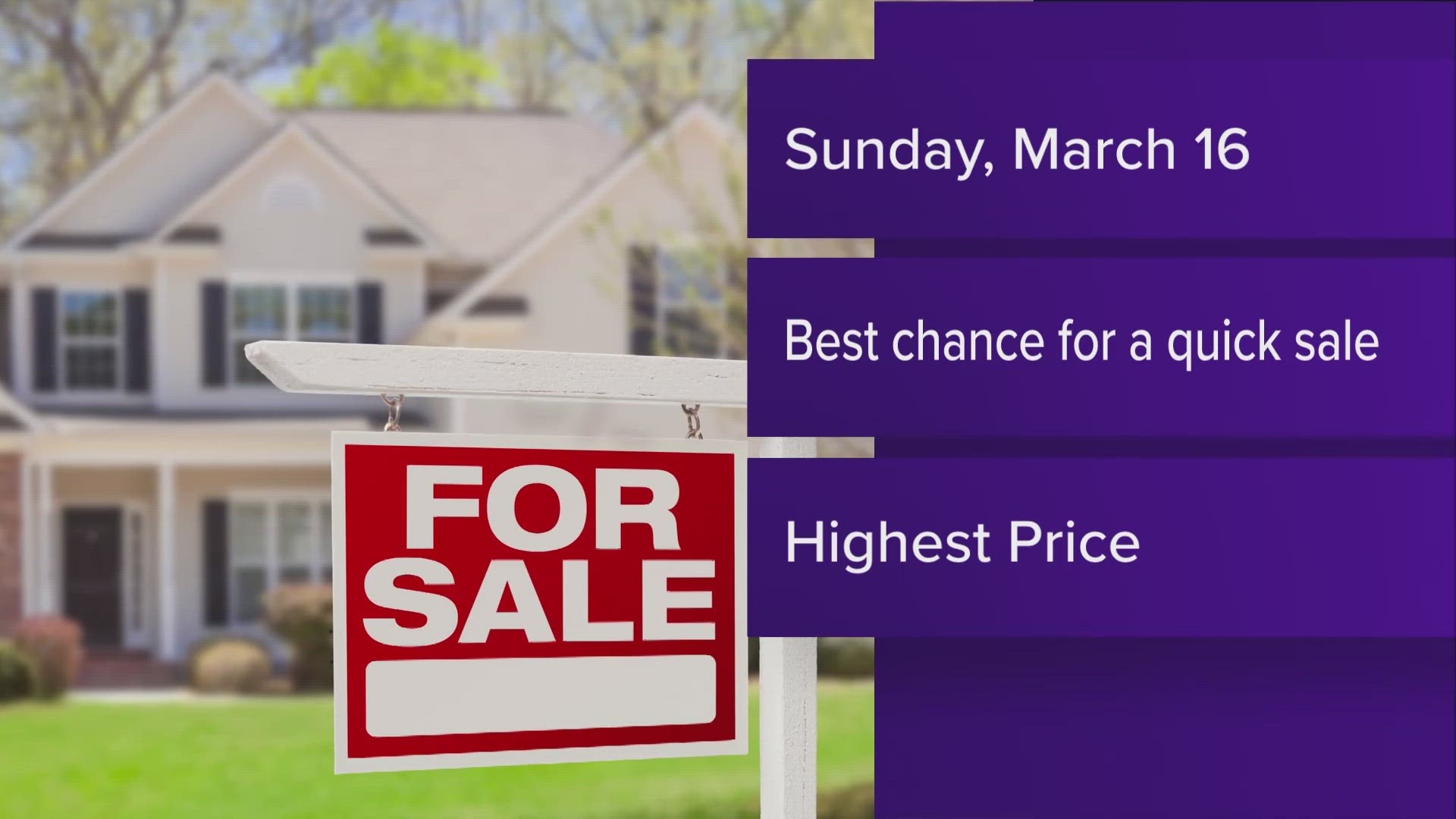DALLAS — Spring is typically the busiest time of year for the housing market, but for sellers, “spring” isn’t necessarily specific enough.
For those sellers, the folks at Realtor.com have narrowed the question of precisely when to list your house down to a science.
While nationally the best time to sell your home is the week of April 16-22, this year the best time to start listing in Dallas-Fort Worth is coming up fast.
March 26, a Sunday, is the best date for a home to hit the market in North Texas, according to Realtor.com's annual Best Time to Sell report. Listing on DFW sellers the best chance for a quick sale at a high price, according to the report.
The prime listing dates vary by market.
In Austin-Round Rock, for example, the best date to list is April 16. The same goes for Houston-The Woodlands-Sugar Land. In San Antonio-New Braunfels, the ideal date to list is April 23.
Homeowners looking to sell in Birmingham-Hoover, Ala., have a little more time to clean and prep for sale. The ideal time to list in Birmingham is May 7.
But would-be sellers in San Jose-Sunnyvale-Santa Clara already missed the boat if their house isn’t on the market. The best time to list in that market was Feb. 12. (Thanks for the heads-up on that one, Realtor.com)
Statistically, selling on the right date is adds up, according to Realtor.com’s research.
Here’s what sellers in Dallas-Fort Worth can expect during the week of March 26:
- An average listing price 5.1% higher than at the start of year, based on typical seasonal trends in DFW
- 35.9% more views per property vs. an average week
- 27.7% less in price reductions compared to an average week
- Eight fewer days on the market vs. an average week
- 23.3% fewer active listings to compete against compared to an average week.
The benefits of listing on the ideal date also vary.
In Austin-Round Rock, for example, sellers who list on April 16 can expect:
- An average listing price 11% higher than at the start of year, based on typical seasonal trends in Austin
- 24.7% more views per property vs. an average week
- 32.3% less in price reductions compared to an average week
- 14 fewer days on the market vs. an average week
- 20.9% fewer active listings to compete against compared to an average week.
Prime listing dates aside, Realtor.com offers this advice to sellers: For the best chance at a quick sale and high price, homeowners should make sure that their home looks its best, has been well cared for and is up-to-date with routine maintenance. If rushing to list your home to hit an ideal selling date means it won’t be in top shape when it hits the market, it’s better to wait, the experts say.
Ensuring that your home looks its best and is priced right is especially critical this year, Hannah Jones, an economic research analyst at Realtor.com, says in the report.
“There are still buyers in the market, but due to high prices and interest rates, they’re being a bit more picky than they were the past several years.”
Realtors.com’s date selections come from looking at seasonal and regional trends from 2018-2019 and 2021-2022 data. Due to the onset of the pandemic, 2020 was an uncharacteristic year and has been excluded from the analysis.
“We expect the 2023 housing market to behave similarly to 2021, 2022 and pre-pandemic years in terms of seasonality,” the report says.
The analysis by Realtor.com scored each week based on favorability toward sellers. This included competition from other sellers (active listings and new listings), listing prices, market pace (days on market), likelihood of price reductions, and homebuyer demand (views per property on Realtor.com). Percentile levels for each week were calculated along each metric and were then averaged together across metrics to determine a Best Time to List score for each week.
The market dynamics have shifted significantly since last spring selling-and-buying season.
Last year, sellers enjoyed sustained demand until mortgage rates caught up to buyers, pushing many out of the market. As a result, inventory climbed and the pace of price growth eventually slowed (although prices continued to be higher than in 2021).
Sellers should also remember that prices tend to peak later in the season — but so does competition form other sellers, Realtor.com’s report says.
“Peak prices later in the season also come with greater competition from other sellers for a similar-sized pool of buyers,” the report says. “Historically (nationwide), by the end of June, while prices reached near-peak levels (+15.0%) compared to the start of the year, new sellers also surged, increasing to nearly 1.5 times higher than at the start of the year (+43.7%). More sellers mean more options for buyers and therefore more competition among sellers. Sellers can mitigate that risk by being an early entry into the market, raising their already high odds of a successful close and likely negotiating favorable terms.”

